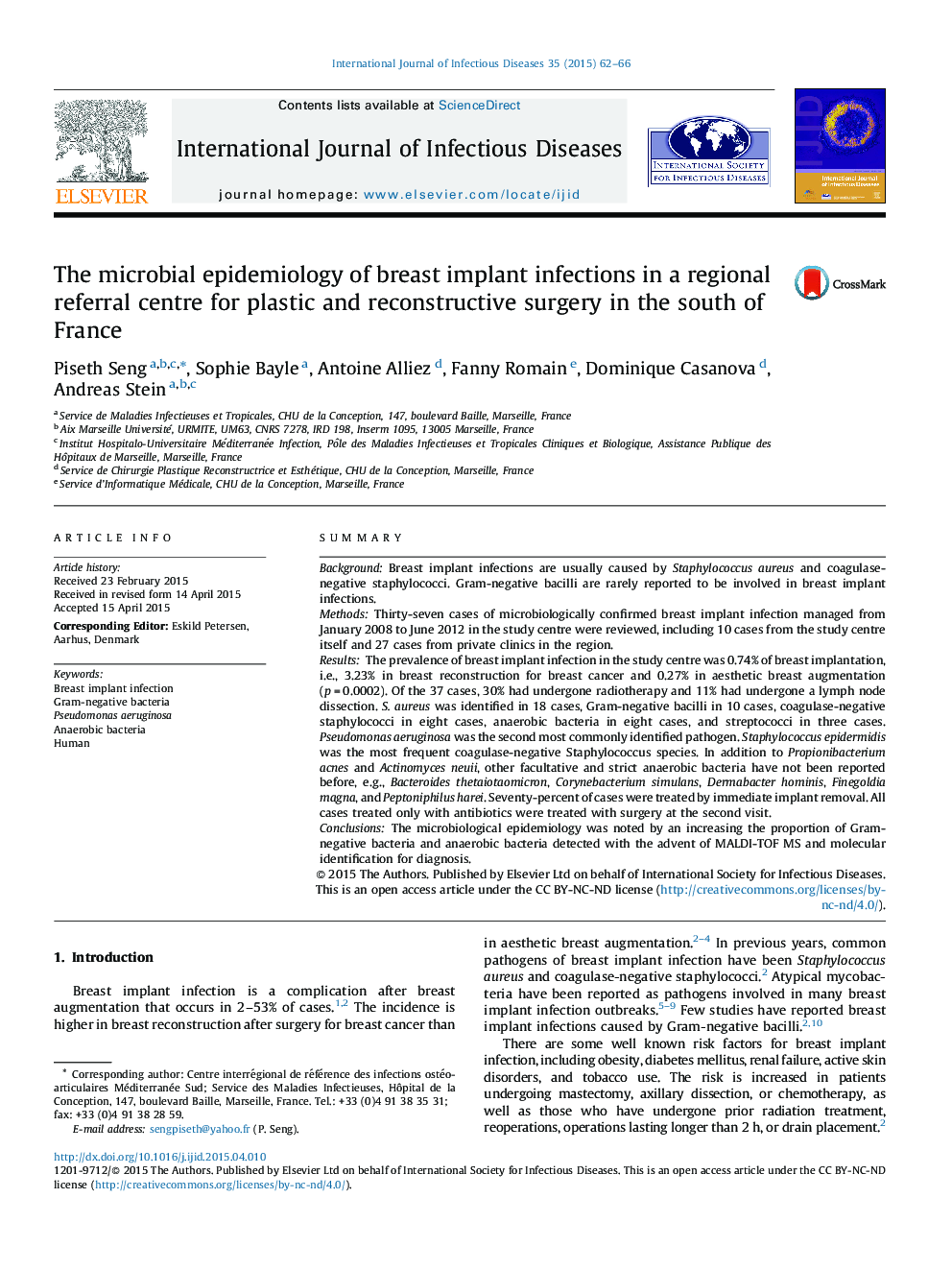| Article ID | Journal | Published Year | Pages | File Type |
|---|---|---|---|---|
| 3362079 | International Journal of Infectious Diseases | 2015 | 5 Pages |
•The prevalence of breast implant infection in the study centre was 0.74% of implantation.•Staphylococcus aureus was identified in 49% of cases and other staphylococci in 22% of cases.•Gram-negative bacilli were identified in 27% and anaerobic bacteria in 21% of cases.•Pseudomonas aeruginosa was the second most commonly identified pathogen.•Never reported before: Bacteroides thetaiotaomicron, Corynebacterium simulans, Dermabacter hominis, Finegoldia magna, and Peptoniphilus harei.
SummaryBackgroundBreast implant infections are usually caused by Staphylococcus aureus and coagulase-negative staphylococci. Gram-negative bacilli are rarely reported to be involved in breast implant infections.MethodsThirty-seven cases of microbiologically confirmed breast implant infection managed from January 2008 to June 2012 in the study centre were reviewed, including 10 cases from the study centre itself and 27 cases from private clinics in the region.ResultsThe prevalence of breast implant infection in the study centre was 0.74% of breast implantation, i.e., 3.23% in breast reconstruction for breast cancer and 0.27% in aesthetic breast augmentation (p = 0.0002). Of the 37 cases, 30% had undergone radiotherapy and 11% had undergone a lymph node dissection. S. aureus was identified in 18 cases, Gram-negative bacilli in 10 cases, coagulase-negative staphylococci in eight cases, anaerobic bacteria in eight cases, and streptococci in three cases. Pseudomonas aeruginosa was the second most commonly identified pathogen. Staphylococcus epidermidis was the most frequent coagulase-negative Staphylococcus species. In addition to Propionibacterium acnes and Actinomyces neuii, other facultative and strict anaerobic bacteria have not been reported before, e.g., Bacteroides thetaiotaomicron, Corynebacterium simulans, Dermabacter hominis, Finegoldia magna, and Peptoniphilus harei. Seventy-percent of cases were treated by immediate implant removal. All cases treated only with antibiotics were treated with surgery at the second visit.ConclusionsThe microbiological epidemiology was noted by an increasing the proportion of Gram-negative bacteria and anaerobic bacteria detected with the advent of MALDI-TOF MS and molecular identification for diagnosis.
Graphical abstractThe 17 species of 47 bacterial isolates involved in the 37 cases of breast implant infection.Figure optionsDownload full-size imageDownload high-quality image (108 K)Download as PowerPoint slide
